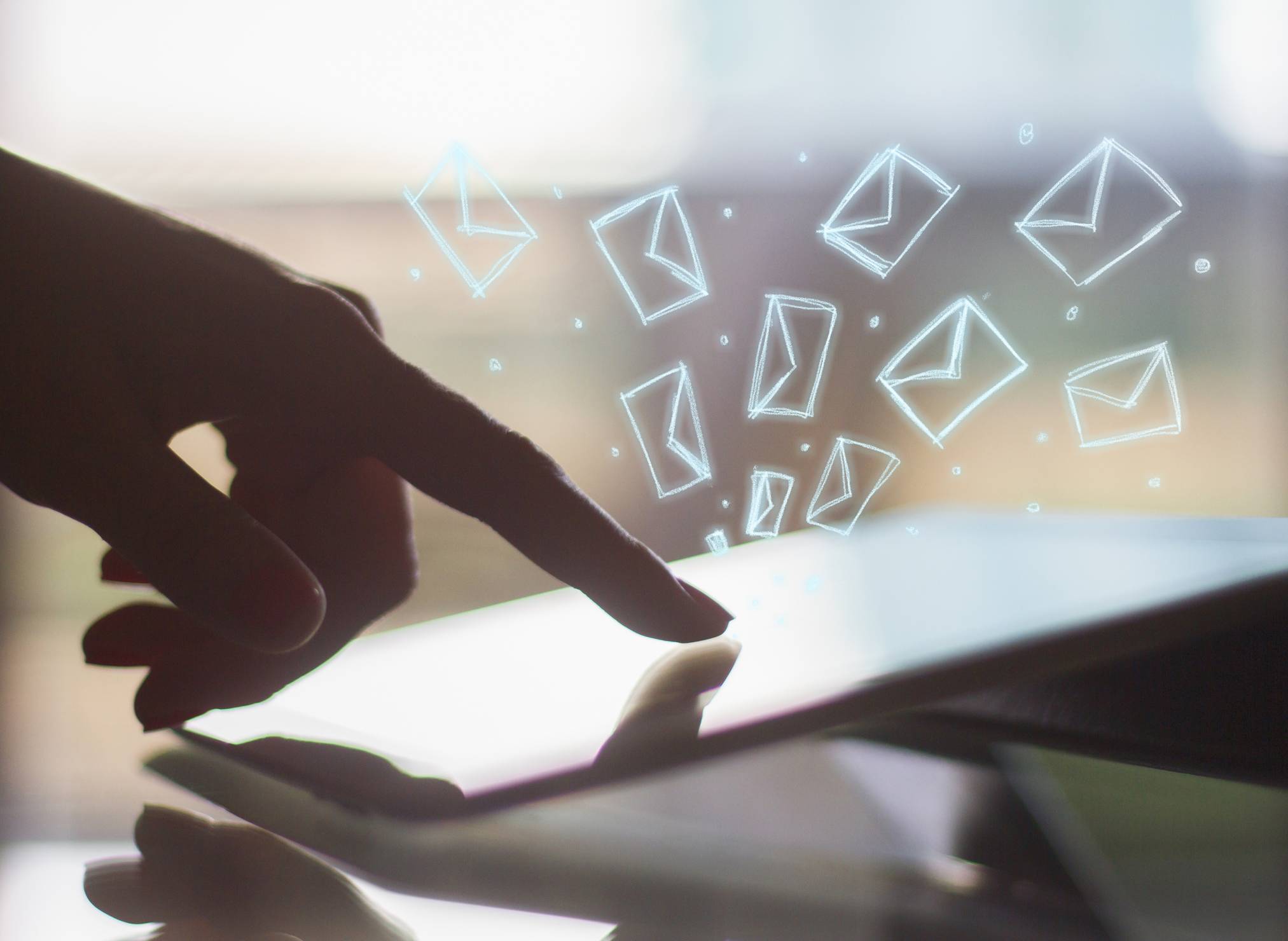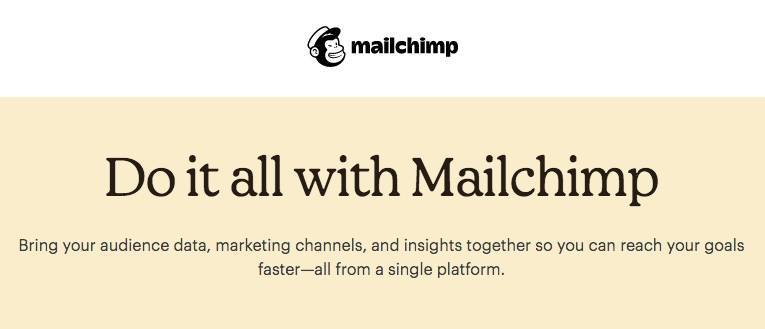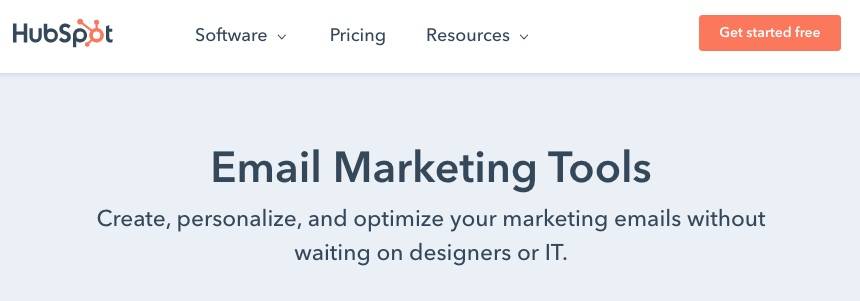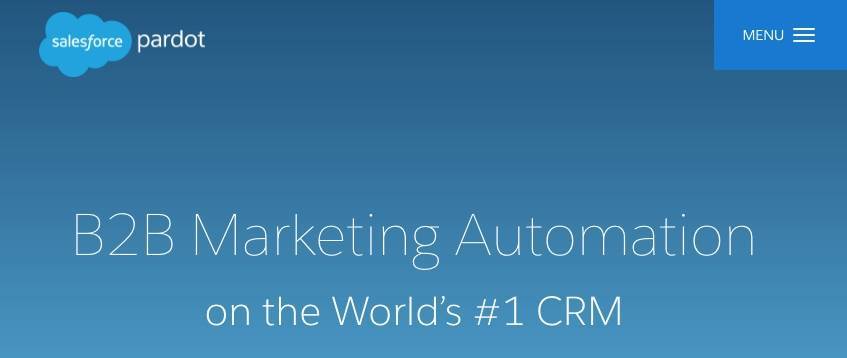

Email Marketing Best Practices for B2B Companies
The world sends about 196 billion emails daily, according to the Radicati Group’s Email Statistics Report. Of those 196 billion emails, the majority (109 billion) are business-related. With the rapid and ongoing migration of business activities from traditional to digital platforms moving forward, the number of worldwide business email accounts are expected to continue growing at an even faster rate.
This fast-paced digital world means our inboxes are constantly receiving new emails from the brands and people who know us–and lots of spam from senders who do not. In response, we are quickly skimming through lots of emails to decide which ones we actually want to read and which ones we should just mark as ‘read’ or simply delete. This frustration might dissuade B2B marketers from considering email an important part of their marketing strategy.
Underestimating the potential rewards of a great B2B email strategy would be a mistake. Why? Because email remains a powerful marketing tool that continues to be the main driver of customer retention and acquisition for small-to-midsize or larger B2B businesses.
So if email marketing has the potential to deliver significant value and ROI for your business, how can you develop and craft your email campaigns so they are received, opened, viewed, and acted upon by your recipients?
Why is Email Marketing Effective for B2B Companies?
A new study says 59% of B2B companies do not use email marketing effectively. However on average, B2B companies send out one email marketing campaign every 25 days. Creating a strong email marketing strategy helps B2B companies reach and connect with target audiences in a personalized way to increase sales and lead generation at an affordable cost.
Just as other platforms and media have changed, the latest email marketing tools give your business the ability to reach customers easier and with more precision than ever. Email has repeatedly demonstrated that it is the most effective digital channel at driving ROI for B2B organizations. Therefore it’s shocking that over half of all B2B organizations are missing out on the benefits of email as a revenue-generating channel.
There are numerous reasons email delivers results for B2B businesses:
1. Every business and individual uses email.
Email presents an incredible opportunity to reach any kind of customer because it has become so ubiquitous across the daily lives of both people and businesses. A recent Hubspot survey states that 91% of consumers use email–and businesses themselves are full of consumers, after all. That statistic alone should be enough to convince B2B marketers to explore the potential value of email as a marketing tool for prospecting and customer engagement.
2. Email reaches customers in real-time.
According to a recent survey by Litmus, 54% of all emails are opened on a mobile device. This is significant and explains why the nuances of your email’s mobile experience should come into play when planning any email marketing strategy. More and more consumers are using their mobile devices to access not only emails, but all other types of media and information. That’s why well-designed emails that are optimized for mobile screens and email clients produce higher conversion rates on mobile than any other medium.
3. Emails can be more timely and relevant.
Email marketing strategies for B2B companies can incorporate seasonal offers, allowing you to promote a holiday special or an annual sale, or to reward customers who reach important milestones in your business relationship. This is particularly effective if your emails create a sense of urgency–customers are much more likely to reply or initiate a new purchase when a deal is ending soon.
4. Email is more affordable.
As with any form of marketing, email requires an upfront investment in strategy–but unlike channels such as PPC or social media that require budget and continuous spending to produce results, B2B marketers can send targeted and customized emails that reach a vast number of prospects and customers for less than pennies per message. This makes the possible cost-per-conversion so low with email marketing that B2B companies can’t afford not to at least consider sending email campaigns more often.
5. Emails nurture warm prospects to become leads.
Your pool of potential customers are all at different stages of the buying cycle. Some may be in the consideration stage, not fully sure whether they need or want your solution; others may be at the research and comparison stage, knowing they have a problem to solve but not quite sure which is the best solution for them; and others will be fully informed and mostly ready-to-purchase. Creating email content for each of your buyer personas can help you determine the best email to send for each stage of the funnel.
6. Email helps brands stay top-of-mind.
Social media isn’t the only platform that helps a company’s brand awareness. Possessing a customer or prospect’s email address means one thing: they showed a level of interest in your business. Email marketing gives you the ability to increase that interest level, that brand awareness, by staying top of mind.
7. Emails are measurable, trackable, and easy to produce.
Email marketing is easy to measure. Most email marketing tools offer the ability to track what happens after you have sent out your email campaign. You can track delivery rates, bounce rates, unsubscribe rates, click through rates, and open rates
8. Email supports existing customers and partners.
Business emails have the ability to keep your customers informed. Consumers are capable of checking their email when it is convenient for them. It can give them a feeling that you are thinking of them. Those that have signed up to your email list have already made a commitment to receive updates. So they will likely enjoy these emails and it will boost engagement with your customers as long as you follow best practices and give them something worth reading.
Best Practices for B2B Email Marketing
Business emails are incredibly powerful. Estimates say that a third of customers use a website or purchase something from seeing an email in their inbox (after due considerations). That’s the power of email to establish contacts. B2B marketers can achieve the same success by following the best practices for email marketing and evolving their email strategy over time.
Perform Thorough Audience Research
B2B is all about buying/selling products/services or exchanging information between multiple business entities. This should reflect how well you understand your target audience. Therefore knowing your target audience becomes more critical in B2B email marketing. The key strategy to have an effective lead nurturing process is to take your potential prospects through a unique journey of all the three stages: awareness, consideration, and decision making.
Target Specific Buyer Personas
During the B2B process, one person does not make a purchase decision. A group of individuals that form the so-called Decision Making Unit (DMU) are involved. You should be able to evaluate your target audience and understand the DMU (Decision Making Unit) to distinguish the decision-makers from the “gatekeepers” for any group of contacts within each company you are targeting.
Directing the email exclusively to the profile of the person you believe is responsible for making the final decision regarding the specific activities related to your product, or to the person at the top of the company, is a rather widespread mistake. Remember: In B2B marketing, it is almost never a single individual making a decision about purchases from end to end.
Realize that each member of the DMU will examine your email campaigns from their point of view. So it is essential to adapt the message of each email accordingly. All marketers say they would like to segment more Every professional profile has different pain points. In fact, a financial director will have different needs and concerns than a technical director or marketing director. The fact that 58% of marketers don't use buyer personas is surprising, as this approach to segmentation has proved successful. Potential buyer personas to personalize the company's email campaigns can help conversions to increase multi-fold with specific target marketing and strategic planning.
Emails that best suit the different pain points will produce the best performance at the level of clicks, involvement, and conversions.
Perform Regular List Maintenance
Segmentation and the removal of inactive or unengaged contacts are a part of maintaining an active email list with subscribers that have value for your B2B organization.
The Value of List Segmentation
As your business grows, your need for multiple conditions and parameters for segmentation will also grow. It's likely you'll want to segment your recipients in various ways across their lifecycle, as they have different needs at different points of their customer journeys or for different products and personas.
Segmentation can be based on using attributes like company size, industry, and revenue to define your email lists. Segmenting your subscribed audience by known interests and communication preferences, can deliver an email experience that’s more personally resonant as well as relevant – something that will increase the likelihood that the recipient will do something with that content, such as sharing it or responding to it.
Removing Inactive or Unengaged Subscribers
Regularly maintaining your contact list is a best practice and highly recommended. Over time, opt-in contact lists can become stale or ineffective if contacts abandon their email addresses or grow disinterested in your content. The purpose of “cleaning” your contact list is to identify and remove contacts that are inactive or not engaged by your recent emails. This helps in the KPI (Key Performance Indicators) of your email campaign
Use Reporting That Makes Sense of the Data
Email marketing is one of the most measurable marketing tactics. You can track everything from who opened and clicked your campaigns to where the subscriber lives and which links they clicked on. But this can be overwhelming if you don't narrow the focus of your reporting on just the information that has value for your specific B2B email marketing strategy.
Typical KPIs (Open rates, click rates, etc.)
When you send campaigns only to active, engaged contacts your engagement metrics such as open and click rates improve. This signals to inbox providers (like Gmail, Microsoft, etc.) that your emails are welcomed by recipients. In turn, your deliverability improves and your campaigns will be even more successful. Just as you analyze your campaigns after they’ve been sent, you need to examine your automations and email journeys regularly to see what’s working and what needs improvement.
Viewing Email Traffic in Website Analytics
Detailed analytics allow you to uncover where your most active subscribers are coming from and how their engagement with your content varies, helping you create a plan for developing a highly effective and profitable email marketing strategy. It also helps evaluate how landing pages support conversion.
It should be no surprise that, if your list growth is stagnant, your wider audience is probably not interested in your messaging. Monitor how your list grows over time to ensure a captive audience. A growing list is a good sign of a healthy list. Understanding the portion of your subscriber base that is active, disengaged, or unsubscribing is incredibly important to develop a strategy that supports a healthy balance of growth and engagement. The processes of collecting and reporting data insights may seem like tedium in some cases, but it offers great potential. The insights you gather are the foundation of your marketing strategy and your guide for tracking your progress.
Strategies to Grow Email Subscriber Lists
Building your list of email subscribers is an ongoing process, and there are a few strategies that will help you effectively grow your list with engaged readers:
1. Effective Website CTAs
This is not to replace or take precedence over your lead generation CTAs. At the end of each blog post, however, include a secondary CTA inviting the reader who has just finished reading the post to sign up for regular updates via email.
2. Organic Social Media Posts
Most B2B brands are solely focused on generating emails through their own site using newsletter sign-ups and calls to action on blog posts and ebooks. For example LinkedIn can be used as a channel to build and nurture professional relationships. It can also be used as a marketing channel for B2B brands looking to connect with their target audience through what is still considered the preferred social network for business.
3. Leveraging Facebook Groups
With over 2.6 billion active monthly users, Facebook is the undisputed champion when it comes to social networks. Did you know that it’s also the channel where B2B decision makers spend the majority of their time online each month? Knowing which Facebook Groups your prospects spend their time in will both present an opportunity to both promote your newsletter (assuming it's within the admin's rules for the Group) and to gather insights on what topics are resonating with that audience and getting them to engage, helping you plan content for your emails and CTAs.
4. Social Media Ads
Since B2B purchases are less influenced by impulses or discounts, there’s more room for relationships to grow into an eventual transaction, and the first touchpoint from online advertising can be crucial in securing a new solid lead and increasing the database of prospects. That's why advertising for B2B businesses is not just focused on lead generation, but also building brand awareness. To that end, LinkedIn and other social networks like Facebook and Twitter offer a handful of paid media products that brands can use to place their email newsletter promotion in front of their target audience.
5. Signups at Virtual or In-Person Events
Events such as webinars and virtual trade shows along with product launches etc are yet another tool for B2B lead generation.These business activities are conducted on a regular ongoing basis (even under the present circumstances in the pandemic) through virtual trade shows and online webinars. Taking established trade show best practices and adapting them for an online audience with virtual events is the changing trend. This lead generation activity helps increase your email list much easier as a replacement to in-person events, as they offer lead generation, branding and networking opportunities – much more conveniently, and without travel, hotel and other operational costs.
6. Gated Content Downloads
Gated content is a strategy used by many B2B companies to give away good and meaningful content to get some good leads in exchange.Gated content for any inbound practice is free; it is only made available against an exchange of information. The very reason for hiding content is to generate leads. When a user comes over to a website and is about to download an asset; it will ask the visitor to fill up a form. This form is crucial information for the marketer to capture the lead. A lead that is eager enough to download an asset could probably be a good lead. Gated content cannot be directly accessed and one can get it only after exchanging some important information like email contacts and other relevant information. Downloads of product information, white papers and other lead generation activities thus increases your subscription list.
Email Opt-In Best Practices
In the U.S., email marketers are expected to adhere to the CAN-SPAM Act not just for bulk email but also for emails that promote content on commercial websites. The law makes no exception for B2B email. That means all email – for example, a message to former customers announcing a new product line – must comply with the law. Keep these recommendations in mind when creating your email opt-ins:
- Don’t use false or misleading header information.
- Don’t use deceptive subject lines.
- Identify the message as an ad if it attempts to sell something directly.
- Tell recipients where you’re located.
- Tell recipients how to opt out of receiving future emails from you.
- Honor opt-out requests promptly.
- Monitor what others are doing on your behalf.
International Email and GDPR Compliance
When B2B companies send emails internationally, there are additional best practices and regulations that must be followed. In May 2018, a new European privacy regulation called GDPR was enforced and permanently changed the way you, as a business, collect, store and use customer data. Still, more than 1 in 4 companies (27%) have yet to begin work on making their organization GDPR compliant as on date.
GDPR arose because of privacy concerns regarding the vast amount of personal data we are putting online that can be tracked. We’re talking about banking information, contacts, addresses, social media posts, even your IP address and the sites that you’ve visited are all stored digitally.
Companies tell you that they collect this type of information so that they can serve you better, offer you more targeted and relevant communications, all to provide you with a better customer experience. Without hard evidence of that being what your data is really used for, GDPR at least gives email recipients some control over whether those companies can keep that information, and how they can use it.
Pros and Cons of Buying Email Lists
There are two options available for compiling your email list, and both require a bit of thoughtful consideration. You can either build your own email list through the best practices listed above, or you can buy or rent access to a list.
Should B2B Marketers Buy Email Lists?
Buying a list starts by approaching a vendor online that specializes in selling email lists. You’ll be provided with the opportunity to target specific contacts based on age, location, and other demographics.With email marketing, you are directly contacting potential leads, and with this comes the possibility of intrusion. Buying email lists has the potential to cross over into illegal waters, so it’s best to make an informed decision before choosing between the two.
Buying email lists means you can have access to hundreds, even thousands, of contacts. Compiling a lengthy mailing list like this manually could take months, which is why bought lists can be so beneficial – they cut the time it takes to reach those leads. This instant access to your target audience can work wonders alongside your marketing efforts, but it’s important to remember this will only be successful if you acquire updated and verifiable leads who are interested in your services.
Avoid Legal Risk for Noncompliance with Privacy Laws
While the majority of email marketers build email subscriber lists via legal means, there are a select few who still build lists without user consent. Those who do could potentially be participating in something illegal in certain countries, as it may constitute an invasion of privacy and consent that goes against the GDPR (General Data Protection Regulation).
As some of the contacts provided by a list vendor may have been sourced illegally, using the list could result in your emails being sent to people who didn’t have the choice to consent. This means they could be getting a lot of unwanted emails, and you may be one of many. This increases the likelihood of your emails being marked as spam, which not only harms your overall email marketing strategy, but also affects your brand image.
In short, it’s clear that email marketing is a little more complicated than everybody thinks. The decision of creating or buying email lists isn’t one that should be made lightly, and all pros and cons should be considered.
Choosing the Right Email Marketing Software
One of the key challenges of email marketing is simply the amount of time it takes to create a great looking email from scratch. Without efficient tools, B2B marketers may end up spending a lot of time creating and sending out emails that are less effective due to poor design and planning. This hinders productivity while dragging down your email marketing ROI.
Most email marketing tools come with robust features even without the need to upgrade to a paid plan. Small businesses and marketers should be able to make the most of them while saving time and money. Even if you need to upgrade to accommodate your business needs, you’ll find that many of the paid plans are affordable and flexible enough to fit your budget.
Some Popular Email Platforms
Choosing the right platform depends on each organization’s email marketing goals and objectives. While there are multiple email marketing platforms that offer great and useful features, the more popular tools are Mailchimp, Pardot, and HubSpot. Here's a little more information about each tool:
Mailchimp

Mailchimp is a leader among email marketing tools in terms of popularity and ease of use. Their free plan provides you with basic email marketing features, such as email creation and campaign scheduling. One nice feature that makes this a great email marketing platform is its Smart Recommendations, which provide you with audience insights to optimize your marketing efforts.
Designing emails on the Mailchimp is also easy using the Content Manager, where you can store your images and files for easy access and placement in your emails. Importantly, Mailchimp lets you automate your emails at crucial steps of the buyer journey, so you can easily send out welcome emails, order confirmations, abandoned cart reminders and more.
HubSpot Email Marketing

HubSpot, probably best known for their marketing automation platform, recently launched a free email marketing tool that can support a lot of the email marketing needs of small businesses.
Whether you need to send kickback emails from lead offers, thank you emails after purchase, or just promote current campaigns, HubSpot Email Marketing’s free version can do that. One of the best parts of HubSpot’s free email tool is its ease of use. The tool features a handy drag-and-drop visual editor, and it also comes equipped with ready-made templates to get you up and running immediately.
What differentiates HubSpot Email Marketing among other free platforms is, of course, its native integration with other HubSpot tools, such as the free-forever CRM. Once you start an account, you get access to both tools so you can create a centralized contacts database, organize it in lists, and manage and track email performance.
Pardot

Pardot is the primary email marketing platform of the Salesforce CRM, one of the most widely used sales management systems in the world. The marketing solutions offered by Pardot vary from marketing automation and analytics to Salesforce engagement and account-based marketing.
As a part of Pardot's premium services, they also offer AI-driven analytics and predictive analytics support. However, since all their platform's features are paid services, make sure you have budgeted for the cost of the services you will likely need to support your email strategy before choosing Pardot as your email marketing tool.
Considering Web and Social Integration Features
Social media and email marketing are two different channels with two different purposes. One is targeted to build brand awareness, the other is focused on building a more direct communication channel between the company and the customer. In other words, social media can be classified as "top of funnel" strategy, while email marketing is mid-funnel.
Still, a great way to integrate them is finding a way to acquire your followers’ email contact info through social media posts that encourage subscriptions. Although 56% of marketers already integrate their social media with email marketing platforms, it’s always good to remember that emails reach their intended audience 90% of the time.
When thinking about combining your social media with email marketing, the first thing that may come to mind is adding the links to your social network accounts at the header or footer of an email. That may have a very little impact on your email performance and revenue, but your customer may become your follower, building connections with your whole marketing strategy holistically. This is especially important in B2B marketing.
A/B testing and Other Features
A/B testing, is the process of sending one variation of your email campaign to a subset of your subscribers and a different variation to another with the ultimate goal of working out which variation of the campaign garners the best results. A/B testing can vary in complexity, and simple A/B tests can include sending multiple subject lines to test which one generates more opens, while more advanced A/B testing could include testing completely different email templates against each other to see which one generates more click-throughs.
If you’re using some of the email tools mentioned above, A/B testing your campaigns is very easy, as you can use the email builder to create 2 different variations of your email and it will automatically send it to 2 different subsets of your list to see which variation performs best.Once the test has concluded and the winning version has been found, it’ll automatically send the winning version to the rest of your list.
How to Create Great B2B Email Content
Email is often effective when used as an extension of a B2B company's content marketing strategy. Content marketing is a form of marketing focused on creating, publishing and distributing content for a targeted audience online, while email marketing is the act of sending a commercial message using email, typically to a group of recipients.
Both marketing strategies support the same goal of building loyalty and repeat business through sending and sharing content. Like content marketing campaigns, the emails you send should have hihg-quality, relevant, and interesting content. They also need to be visually appealing. Finally, they need to have a strong purpose.
There are a few best practices to keep in mind when writing B2B emails:
1. Craft subject lines that pique the recipient's interest.
A subject line is your email’s first impression, and you don’t have much time to make it. One study found you may have only 3 seconds to capture a reader’s attention. That’s essentially one quick glance. It’s important to make those 3 seconds count. Keep your subject line interesting, snappy, and something you’d click on. Always keep in mind the content marketing approach to email: you’re trying to help the reader, not close a deal. Make sure your subject line reflects that.
2. Use tone and messaging that resonates with your reader(s).
First and foremost, your email copy needs to reinforce your subject line. Once you have their attention with your very clickable subject line, use your body copy to share quality, relevant, and industry adjacent content. The more relevant it is, the more it will be shared, and the more your name and brand get in front of potential customers. This is crucial to building trust and delivering on the expectations you set.
3. Personalize the message and calls-to-action.
By crafting a series of messages customized to address a topic or purpose, marketers can nurture their subscriber relationships and increasingly earn their trust. However, unless you are certain the subscriber data is accurate, you need to be careful about using it to personalize an email. Email campaigns that aren't personalized to feel more specific and relevant to recipients waste time. Consumers today generally expect some degree of personalization and yet a whopping 75% of customers say that they're not getting email content that speaks specifically to them. Good personalization can help you convert. Bad personalization will actually kill your efforts.
4. Include high-quality designs and branding.
Don’t overlook the value that email offers for strengthening your brand’s relationship with customers and prospects. B2B marketing emails should contain fantastic design elements like icons, CTA buttons, colorful imagery and also it should be well laid-out and easy to quickly scan on mobile – something that’s especially important to remember for your audience of on-the-go entrepreneurs.
5. Don't forget to add a call to action (CTA).
Read through your email and make sure you are asking recipients for something. You have an engaged audience reading your content, so be sure you take advantage of the opportunity. Make it clear what you want people to do and then make it easy for them to do it.
6. Optimize your landing pages.
If you can increase subscriber engagement with every email you send, then you will increase sales, average revenue per customer and overall company profits. One way to achieve that is linking your email into optimal landing pages within your website through CTA. As a result, every business will take a unique approach in order to bring its audience along the journey of becoming a prospect and eventually a customer through email marketing into an organization’s other messaging platforms as desired.
Partner with an Agency that Knows B2B
Email is constantly evolving, and it continues to become more and more sophisticated with time, thanks to market intelligence, automation, artificial intelligence, the need for compliance with new data privacy regulations, and more innovations sure to come moving forward. While it may sound hopeless with the majority of companies failing at email marketing, their lack of results actually presents you with an opportunity to get it right and beat your competitors with smart email campaigns.
Armed with the knowledge presented and the best practice tips we’ve included above, you now have everything you need to stand out from the competition and leverage email marketing as part of your overall B2B marketing efforts the right way.
But if you need that extra help getting there, here at DBS we are experts at everything B2B email marketing. So whether you have a small subscriber list or wish to expand your email efforts further, contact us to get started on turning email into a B2B lead generating machine for your business!




